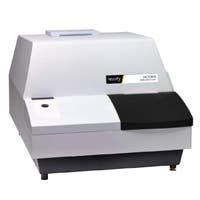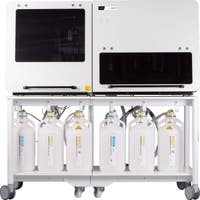Background
Down syndrome, also called trisomy 21, is associated with the presence of an extra copy of chromosome 21. It is the most common chromosomal disorder in liveborn children and, although typically random, does occurs more commonly in the offspring of women as they get older.
- In 95% of all cases, an entire third copy of chromosome 21 is present in all cells (primary trisomy).
- In some cases, part or all of chromosome 21 is attached to another chromosome (”translocation”) during the formation of reproductive cells or very early in fetal development. People with Down syndrome due to a translocation would therefore have two regular copies of chromosome 21, plus extra material from the chromosome 21 that was attached to another chromosome.
- Another way Down syndrome can occur is when the extra copy of chromosome 21 is found in some cells while the rest of the cells have the typical 2 copies (“mosaicism”).
Clinical Diagnosis
People with Down syndrome typically have some degree of intellectual disability. There is a wide range, with some people being severely mentally disabled, while others may be more mildly affected. People with Down syndrome also tend to look very similar and about half have other physical issues (such as heart defects, intestinal issues or vision and hearing problems). In mosaic trisomy 21 cases, people with Down syndrome often do not have all of the typical physical and intellectual characteristics as people with full trisomy 21, as their percentage of cells with the extra chromosome 21 is lower. The average lifespan for people with Down syndrome is currently 50-60 years.
Testing
Testing for Down syndrome can be performed during pregnancy, as early as the 1st trimester. Tests fall into two categories: either screening or diagnostic tests. While diagnostic tests can provide a definitive answer as to whether there is Down syndrome or not, they are invasive and are thus associated with a small chance of miscarriage. Screening tests, on the other hand, are non-invasive (blood tests or ultrasounds) and thus have no associated increased risk for miscarriage. Although they are safe for the pregnancy, they are not diagnostic and can only say whether there is a high or low chance that the baby has Down syndrome.
Treatment
Currently, there is no cure for Down syndrome. However, early intervention can help people with trisomy 21 live productive lives well into adulthood. Corrective surgery for heart defects, gastrointestinal irregularities and other health issues may be necessary for some individuals. Regular screening is needed for other medical conditions and disorders.
Inheritance
Down syndrome occurs in 1 out of every 600-700 births. Most cases of Down syndrome, including mosaicism, are not inherited. However, Down syndrome due to a translocation can be inherited. In this scenario, an unaffected carrier parent can have a rearrangement of genetic material between chromosome 21 and another chromosome. This is called a balanced translocation because there is no extra or missing material from the chromosomes. Although they do not have Down syndrome, people who carry this type of balanced translocation are at an increased risk of having children with the condition.
Related products































